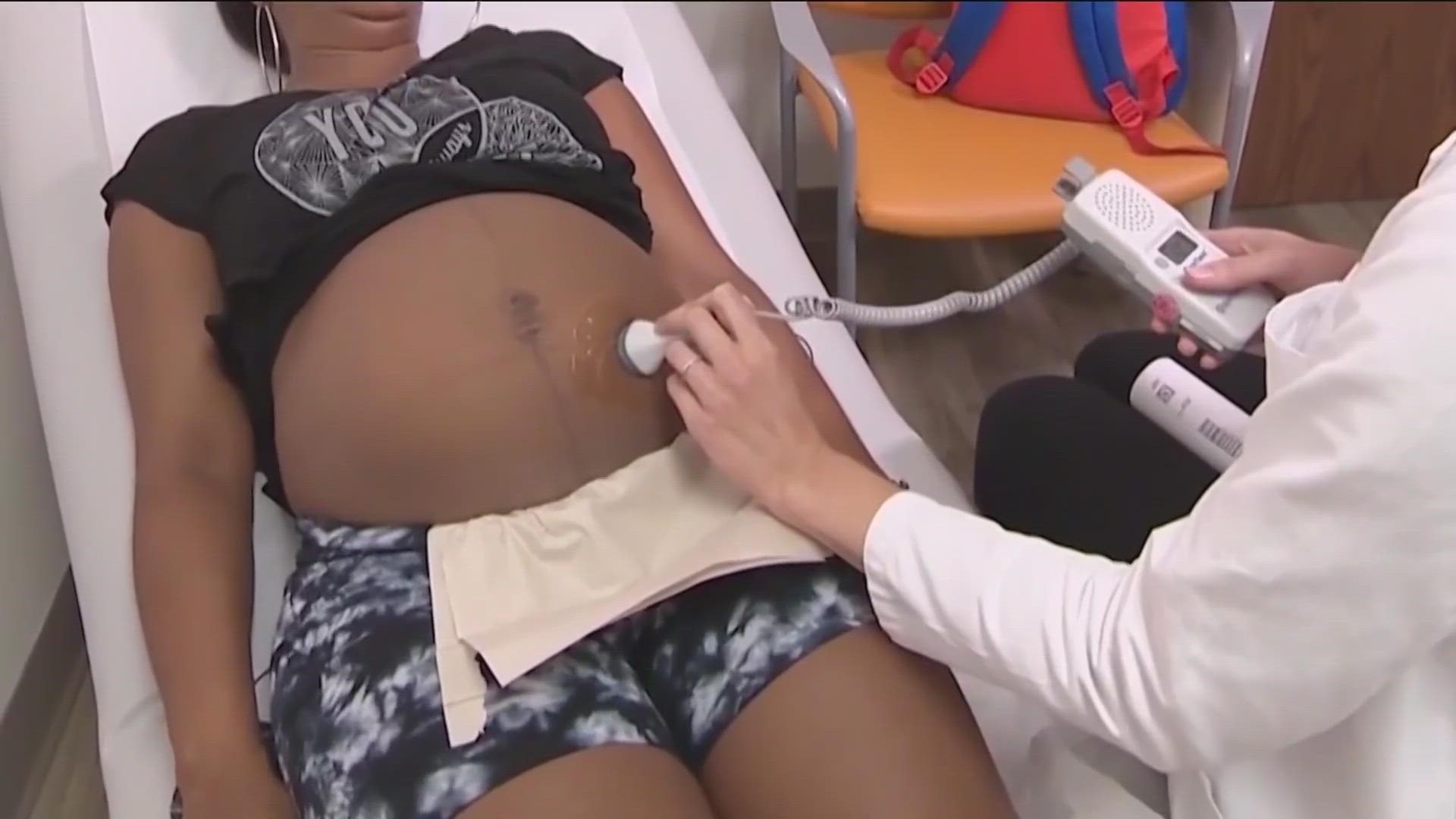SAN DIEGO — Black women are nearly three times more likely to die in childbirth than white women. This comes from several reports from the Centers for Disease Control.
Local doctors said they do what they can to stop this rising trend. Others said black families have suffered from this issue for far too long.
"She's like the coolest baby. She's so smart and chill,” Whitney Anderson shared as she described her 3-week-old baby girl. Amarii, Whitney’s husband, added, “She's already crawling around and lifting her head.”
The couple looked at each other as they described how much their world had changed since their daughter’s birth. Then Amarii, visibly filled with pride and love, added, “And those eyes? Oh my God!”
Amari and Whitney sat comfortably on a couch at The San Diego Community Birthing Center, where they found a community of new parents and clinicians to support their growing family. Whitney said happily; she always knew she wanted to go a different route to becoming a mom. However, Whitney said after the young couple married, “I didn’t think I could get pregnant. We didn’t know it was possible.”
But when she and Amarii found out they were expecting, Whitney exclaimed joyfully, "I was like, 'I want to be in a birthing tub!” Amarii added he initially questioned the idea, “I was like, 'Wait, you want to be in a tub?” Whitney countered happily with ease, “And I was like, 'I want you to be in the tub with me!'" The young couple continued to beam with joy recounting the life-changing experience.
Whitney said choosing a birthing center instead of a hospital setting was easy. "I never felt advocated for in medical spaces,” Whitney shared candidly. “I lost a friend a few years ago. She was birthing her third child in a hospital and complained about some pain she was having afterward. She was overlooked and passed away from hemorrhaging."
Whitney and Amarii are like many young Black couples who choose places like The San Diego Community Birthing Center for their growing family. “No matter what, you're going to feel supported. No matter what, your partner will feel supported,” Whitney said. “And you don't get that in a hospital." The New York Times says the concerns are not hyperbole.
Black women are more likely to have C-sections, have their pain minimized, report mistreatment, and have more stillbirths than white women.
This comes as more families, regardless of race, seek alternative birthing options like midwives, doulas, and birthing centers. Nikki Helms, a midwife with The San Diego Community Birth Center and Whitney and Amarii's midwife, says more families started choosing birthing centers during the pandemic. "Many people were put off by the idea of being in the hospital where people are sick and dying to have a baby.
The one-to-one patient-to-clinician ratio gives me more opportunities to pay closer attention to what is happening. Helms said that many of her patients report having difficulty navigating the hospital setting when giving birth.
Helms shared their feedback, “(The lack of) continuity of care, the disregarding of people's education level of what is happening in the hospital and antiquated education.” Helms continued, “It wasn't too long ago that people were still being taught in medical school that Black people didn't feel pain the same way everyone else did."
According to the US Government Accountability Office, the maternal death rate for black families was about 44 per 100,000 live births in 2019. It rose to 55.3 in 2020 and 68.9 deaths per 100,000 live births in 2021.
White families had death rates of 17.9 per 100,000 live births in 2019, 19.1 in 2020, and 26.1 per 100,000 live births in 2021.
Dr. Abisola Olulade, Sharp Rees-Stealy's Chief Impact Officer, said, "This is a public health crisis, and it represents a failure of our public health system. You still see this disparity even when you correct for adequate healthcare insurance or socioeconomic status.
That points to a bias, and we know that there is a bias. Sometimes it's conscious, and sometimes it's unconscious." Dr. Olulade said as doctors and hospitals shift from awareness to acceptance of the deadly situation for families, particularly families of color. Sharp and other hospitals are doing their best to bring those numbers down. "We want to make sure that everyone can track those standards so it can be easily seen that everyone is getting the same care. The research shows that Black women consistently get lower quality and delayed care."
As Whitney's delivery progressed, she had to be transferred to a hospital setting. Three weeks after welcoming their beautiful bundle of joy, Whitney and Amarii still agree the best way to protect their growing family started by thinking outside the box. Amari concluded, "They (hospitals) don't listen to Black voices, particularly Black women. To ensure we were both safe and everybody was safe, we felt the birthing center was the best option."
San Diego County residents can click here for more information about its Black Infant Health Program.

